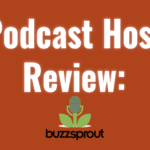How to Dust Off Your Most Popular Archive Episodes For New Audiences

What do you do with your most popular podcast episodes once they’ve passed their shelf life?
You’ve spent a lot of time and energy crafting podcast episodes that gained some real traction. That can’t be the end. It’d be nice if there was more than one opportunity to give them a listen right?
While the conventional wisdom is that new, fresh content is the only way to attract a following, that isn’t the case. Blogs, for instance, have been repurposing content for years. Why can’t you, dear Podcaster, plumb the depths of your dusty podcast archives to repurpose your best content for a new audience?
Well, you can. You just have to do so in a way that values your audience and moves the show forward.
Here’s how you do that.
Why Update Your Most Popular Episodes
There are a few reasons to revisit your most popular older episodes. The first is coming up with new ideas for content isn’t the easiest exercise in the world. It’s a skill that has to be built up. Coming up with fresh show ideas for a content creator is akin to lead generation for a sales professional.
As your podcast matures, the golden threads that make your podcast unique will mature as well. Your niche and your place in it, will become clearer. More well-defined. So, as you become a better Podcaster, it makes sense to revisit old shows to improve them.
The ingredients were solid, but the preparation, or execution, could have been better. Revisiting popular shows demonstrates to your audience your respect for them. That you appreciate their participation in the show’s community.
Last, you can expose something you know is popular to a new audience. It isn’t always necessary to reinvent the wheel. So let’s work smarter and not harder when there’s a tangible upside for doing so.
Splintering Content
Since coming up with new content is difficult, why not do a deeper dive on content that already works for you? Splintering is a marketing practice that involves breaking a piece of content into discrete chunks. Then using each small piece as the foundation for a new piece of content. Like chopping wood to create the kindling that builds a new fire.
Apple Podcasts | Stitcher | Spotify
As we saw last year, mini-series and stand alone multi-episode arcs were among the most popular podcasts and shows. That trend is likely to continue in 2021 and beyond as listeners seek a deeper understanding.
Think of your older shows as test balloons. Once you know what works, you can double down by breaking them up into larger discussions.
The Expert Panel
Speaking of a larger discussion, moderating a panel of experts is the next way to revisit successful episodes.
A popular way to add value to a popular episode is to expand the conversation. Invite more people in. Bring new, unfamiliar, energy to the show.
Ask your audience on social media for questions they’d like answered on the topic. Go back and mine the comments from the show that prompted this follow up.
When you act as a proxy for your audience, it creates a bond between host and listener.
If you’ve never hosted a panel before they are a good arrow to have in your hosting quiver. Plus, a panel discussion translates well in the socially distanced era.
The Round Up Show
This effective content trope is a staple of television writer’s rooms everywhere. When there is the need for a vacation, or a writer’s strike, what do you get?
A clip show.
They’re pretty straightforward to create. As outlined in this episode of Smart Passive Income, a round up show is a collection of your best segments.
Piece them together so new listeners can get a flavor of your show and link the full shows in your show notes.
You want to be crystal clear with your audience that this is a round up show of archival material. Set and exceed expectations. You don’t want them to download a podcast archive episode thinking they’ll be hit with new material.
As a podcast host, you want to avoid listeners shutting your show off at all costs. Obvs. Yeah?
The Q & A Follow Up
A sustainable podcast has an engaged listener base. It’s difficult to grow your show if it’s a one way street. People will dip in and move on.
Soliciting questions from the audience about your most popular episodes keeps them engaged. It draws them in and gives you a content creation break.
This can take a couple of different formats.
- The question round up – a single show devoted to multiple questions with short answers. You can use your answers to direct your listeners to relevant content. Thus keeping them in your show ecosystem.
- Question deep dives. Questions that are of particular interest to you may warrant an entire episode of their own. A word of caution: if you rely on this strategy too much then your show can begin to lack narrative cohesion.
Which tack you take depends on how much response you get and the size of your audience. A smaller audience response lends itself to the deep dive. A large audience response, just the opposite.
The Topic Venn Diagram
Overlap a popular shows key topic with a related topic. You want to slowly expand the overlapping circles of what you talk about.
This overlap keeps it fresh. Fresh without having to come up with something completely new every episode. It gives your show an arc and familiarity that listeners will gravitate to. But it doesn’t pigeonhole you into a single topic or too tight a niche.
Make sure there’s enough overlap between the ideas you are combining. Otherwise, it will feel disjointed and out of place. A good example is the Bad With Money podcast.
Apple Podcasts | Stitcher | Spotify
Gabby Dunn’s admitted lack of financial literacy and earnest desire to learn undergirds every show’s companion topic. Social justice and personal finance may not seem within the same show’s scope. Granted. But Bad With Money has plenty of topical gravity to make it work.
New Intro, Who Dis?
Last, but certainly not least, is recording a new introduction for a show from the podcast archive. Throw it back out and let it have some new life. This is by far the easiest way to reuse content. And, like taking questions, you can’t rely on it with much frequency to buoy a show. That said, there are times when an archived show hits all the right notes.
This technique is most useful for your “I told you so” moments. When a particular episode, segment, or discussion cries out to be heard again. All you have to do is record a new intro to let your audience know why the show has renewed relevance.
Current events, a scientific breakthrough, or reorienting your show back to it’s core are all good reasons to rebroadcast.
As with the clip show format, make sure you let your listeners know you’re going to be sifting through the podcast archive. A good host always sets expectations with their audience.
When Larry King passed away, host Jim Kwik was able to re-release their interview. They discussed legacy. And when is that more appropriate than after a titan’s passing? Meaningful and poignant.
Apple Podcasts | Stitcher | Spotify
Conclusion
Once you’ve put the work into creating popular podcast content, there’s no reason to let that content sit in your vault collecting dust. There are several methods to reuse, break apart, and expand upon your most popular content.
As your podcast matures, your popular podcast archive material can drive your focus and refine your niche. Experimenting with new content is a heck of a lot more fun when you know you have a home base to return to.
So throw open the vault and start digging. Those popular episodes are screaming for attention.
What are some of your favorite podcast archive revisits? What shows have taken an effective trip down memory lane?
—
Podcast Resources
Pro Blogger Podcast
Apple Podcasts | Stitcher | Spotify
So, Here’s the Thing With Laylee Emadi
Apple Podcasts | Stitcher | Spotify
Bad With Money
Kwik Brain With Ji













Comments
Comments are closed.